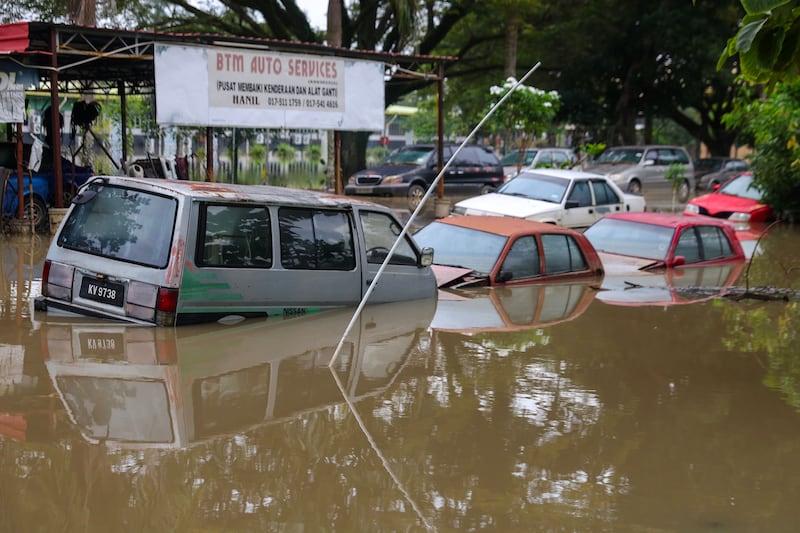“I won’t stay another winter here but will always go out to see it in the summer because I cannot forget the beauty of it.”
Those words spoken by a former island resident and recorded on the information panel beside Oileán Ghabhla’s landing pier at Tráigh na mBláthán stopped me in my tracks. These are the words of an islander with a lifelong love of the island, but also with a soul seared by raking winter storms and the darkest of winter nights. And it struck me that no matter how much I would write about our one-week summer visit, I could never find the words to describe such a feeling for the island, and how love and desperation would have shaped it.
We settled in to a kind of lockdown on this tiny island of no shops, restaurants, pubs or catered accommodation and let the island advise us of its rhythms and tell us of its moods
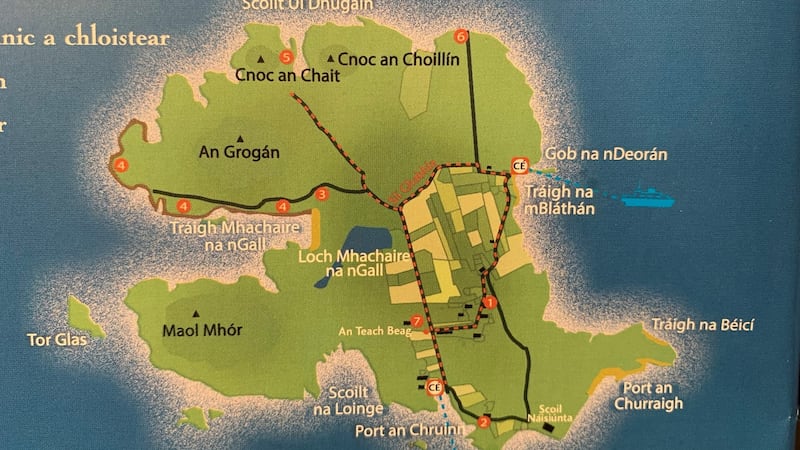
I’d come to the island for a snatched day trip at the end of the hot, dry spell in the summer of 2018, on a day of transition between intense heat and the return of fresh Atlantic breezes. I was lucky though and the day was beautiful, a day of colour and light and a warm and gentle sea wind. I walked the island’s marked train, the Slí Ghabhla, sat on the cropped grasses above spectacular Scoilt Uí Dhúgáin and listened to the sounds of the sea and wheeling gulls.
I remember being struck by the green of grasses, the blues of seas and skies and the warm pink of granite shores and sea-breached islands. But a family BBQ on the beach near Derrybeg awaited, and before the island had a chance to tell me its stories, or share its moods, I was back on the Cricket for the 10-minute crossing to the mainland pier at Magheragallan near Bunbeg. The island called me though, its promise of Atlantic sunsets and Errigal sunrises and dark-sky stars and night winds irresistible to me, and I knew I'd be back.
And so in late August of last year Eddie met us at the little island pier in his jeep and brought Moya and myself and a week’s supplies across the island to the wonderfully situated Teach Jimmí, just up from the focal point and information centre of the island – an Teach Beag, Eddie’s little coffee shop chalet. We settled in to a kind of lockdown on this tiny island of no shops, restaurants, pubs or catered accommodation and let the island advise us of its rhythms and tell us of its moods.
If we had wished, we could have spent every day down at the activity centre (Ionad Eachtraíochta) beside the little harbour, along with many of the day visitors and holiday residents, paddle boarding or kayaking the island’s gentle and sheltered east coast or snorkelling its crystal clear waters. Instead we fell into a lovely relaxed routine of walks, breathing the air, shore fishing, swims, long sleeps and lengthy chats over morning coffees at An Teach Beag, sometimes listening in to the beautiful Gaeilge of this strongly Gaeltacht area.
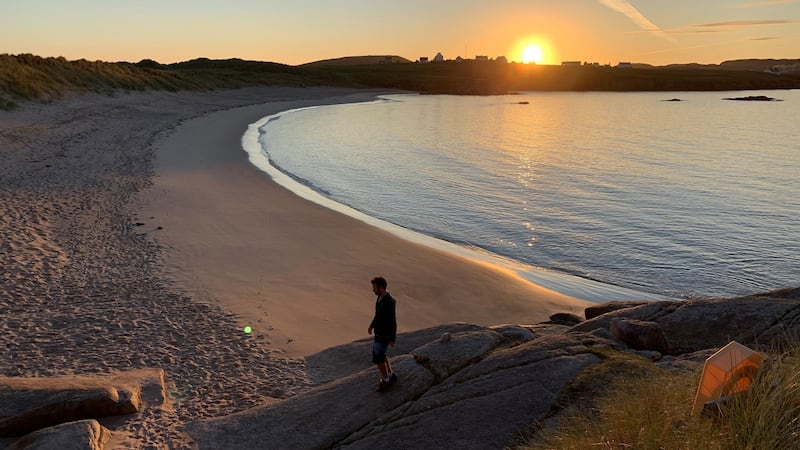
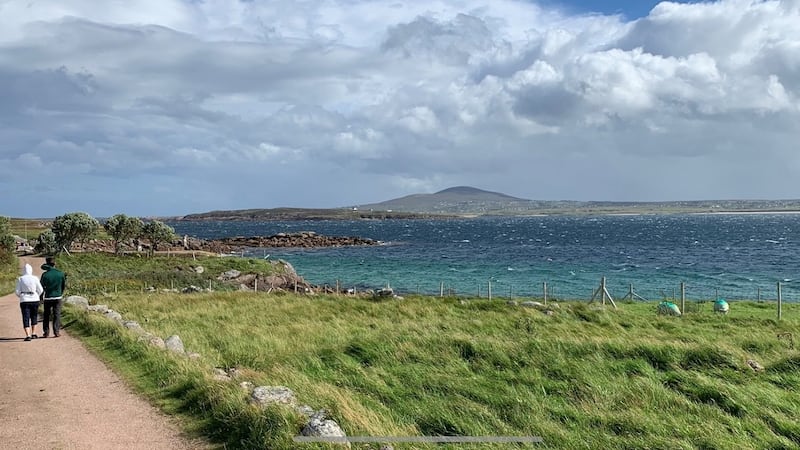
Okay, we did have – on rare occasions – to fight off midges, run from squalls and look out windows at a still beautiful colour-drained and rain-spattered island. And the one rainy evening of the week was no hardship to us. In fact, a warm turf fire and a glass of wine, listening to the wind and rain in our rented accommodation at Teach Jimmí as Storm Ellen approached, made it instead a lovely cosy interlude.
As my son Eoin and I explored the island, its battle-scarred west coast told a story of endless wild Atlantic storms, leaving the great pinnacles and tors and sheer rock faces of pink granite that make this island a mecca for serious rock climbing addicts. Green roads, actually old turf extraction tracks, running west of the Slí Ghabhla to the south of An Teach Beag and just to the north of Loch Mhachaire na nGall, are worth seeking out for a close look at the dramatically indented west coast.
And the views from these tracks, and the high prominences of Maol Mhór in the south west corner of the island and from An Grogán in the north west, are some of the best I've ever seen in Ireland. They range from the long undulation of Tory to the north, over rounded Cnoc Fola and the great white windmills of Tievalehid, to the scree-draped Donegal sentinel of Errigal and the nearby Poisoned Glen, and across to sandy Cruit Island and rocky Owey, with the long brooding line of Arranmore dominating the southern skyline. These high, cropped grassy perches are perfect for many a hangout, on different days and in ever-changing light, and are especially great places to sit and watch a slow Atlantic sunset.
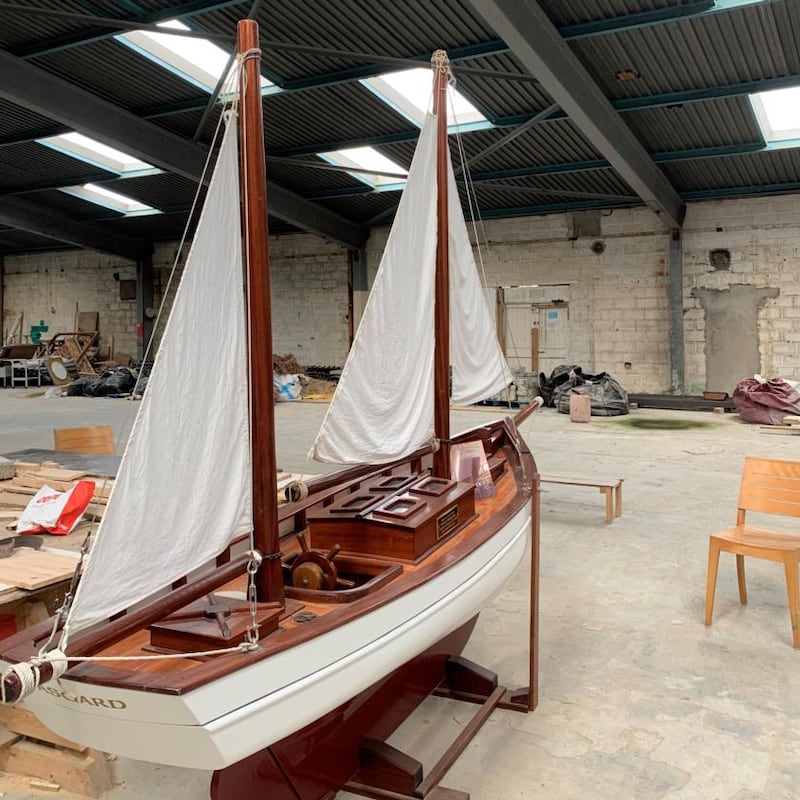
As we explored its south and east coasts, we found ourselves drawn into the stories of the island: the poignant little Reilig na bPáistí with its lovingly walled embrace of rounded granite stone, the nearby old school house, now derelict but once filled with learning and laughter of the island communities' happy children, the memorial to the two islanders who crewed the Asgard on its gun-running trip from Germany to Howth in Dublin in 1914, and the list of 13 of those lost at sea over the years on a panel just above the landing pier, one of whom tragically was four years old; and away to the north at the end of the Slí Ghabhla beside Scoilte Ui Dhugáin, a tasteful memorial to two relatives of island people, frequent visitors to the island, who died in the New York terrorist attacks of 9/11.
And all of these stories, and many more, were generously elaborated for us over long coffee-stop chats on days of sunshine and blowing mist at An Teach Beag by Eddie, who clearly loves the island he grew up on, and was so kind to us visitors from the capital.
We loved the island’s pristine beaches: west facing Tráigh Mhachaire na nGall with its lively sea and extensive flat machair and lough, perfect for camping, and its sea-rounded stones and sands of warm pink granite, all framed by the long embracing arms of its sheltered bay; we especially loved the beautiful curves of east facing Tráigh na Béicí, a less than five-minute walk from Teach Jimmí and where we swam and walked and sat and pinched ourselves to be there; and sometimes we watched as cloud slowly unveiled the drama of Errigal and the setting sun turned its light grey quartzite screes into the subtlest of pinks.
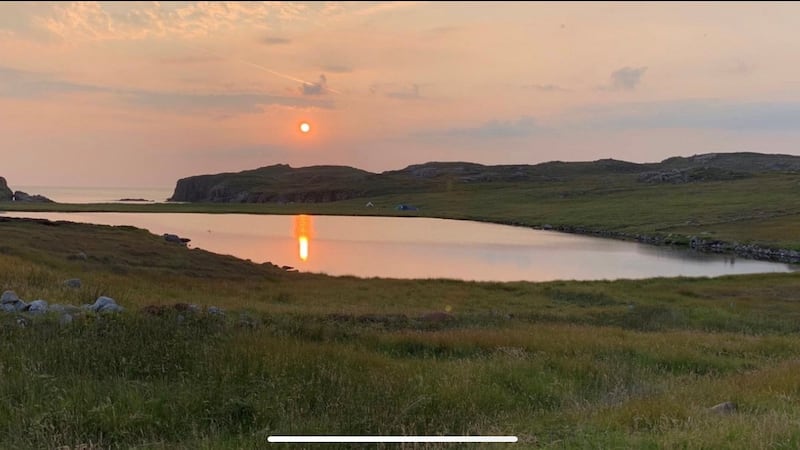
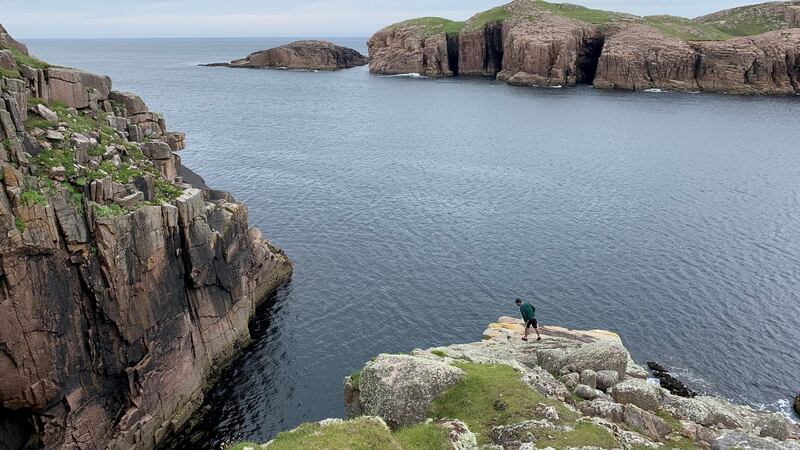
We came to the island on an August Saturday when a hot east wind blew off the mainland, steered up from France by a resident low in the Bay of Biscay. We left the little pier at Tráigh na mBláthán on a Saturday shining with silver sunshine and the clearest of north west Atlantic air; and in between the two Saturdays we enjoyed both the ciúinas and intimacy of a small island and the brief mid-week ferocity of Storm Ellen. And we were surprised to see, in the days of blowy bright sunshine after this visitation, how this sturdy little island had evidently seen it all before, and had shrugged off the storm with a kind of elemental nonchalance.
By way of postscript, and before heading home, Hughie Beag (a friend of Eddie) brought me to a warehouse in the Gaoth Dobhair industrial estate to show me the beautiful four-metre replica of the Asgard. This was lovingly built by Eddie and himself over two years, a testament to the pride, resourcefulness and artistic skill that imbues the local people of this magical north-west corner of our island.












